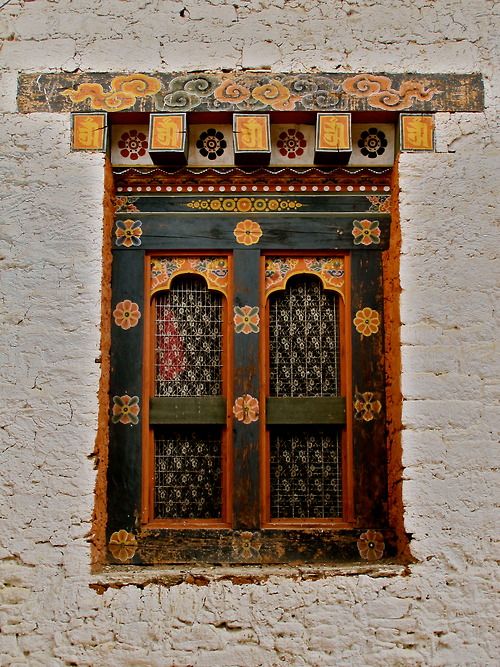#4511. Traditional Tibetan window facade with rich ritual ornamentation
The image showcases an exquisite example of traditional Tibetan or Bhutanese architecture — a decorative window embedded in a light-colored plastered wall. The window exhibits elaborate ornamentation characteristic of Buddhist architectural traditions from the Himalayan region.
The window structure features two symmetrical panels. The window opening is framed by a dark green wooden frame, richly adorned with floral motifs in golden and orange hues. Each panel contains an intricate lattice with geometric patterns, creating an effect of shade and providing privacy to the interior space.
The upper section is decorated with a decorative cornice featuring alternating yellow square panels and floral motifs resembling lotus or other flowers sacred in Buddhism. Above it lies a traditional painted frieze depicting stylized clouds or waves — an element commonly found in the sacred architecture of the region.
The contrast between the rough texture of the light wall and the intricate detailing of the window creates a striking visual tension, emphasizing the significance of the decorative elements. This is a characteristic technique in traditional architecture, where decoration concentrates around openings, highlighting the boundary between interior and exterior spaces.
